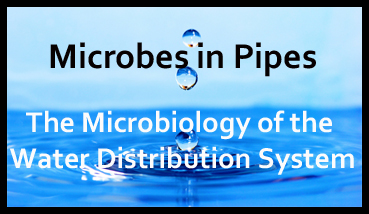Our Water Infrastructure – An Interconnected Microbial Ecosystem

By Siddhartha Roy
A recent AAAS symposium on Microbiomes of the Built Environment in Washington DC featured some of the prominent work being done on the frontiers of modern water science in the realms of drinking water distribution systems, waste water infrastructure, and premise (building) plumbing.
A Gizmodo feature discusses this idea of considering our water infrastructure (all three kinds) as interconnected microbial ecosystems – which indeed they are. Whether it is waterborne pathogens (like Legionella pneumophila) that might lurk in premise plumbing and infect you in the shower or harmful bacteria that propagate failures (corrosion) in concrete sewer pipes – identifying the role microbes play is critical to devise custom-fit solutions. Microbiological phenomena eating away ‘underground pipes’ may appear counter-intuitive but considering how they (microbes) are our numero uno public health enemy in causing diseases, one cannot but marvel at their proliferation and extent to which they do rule our lives.
It is in this context that the talk of Dr. Amy Pruden, among other distinguished researchers, at this symposium is worth mentioning. As we become disillusioned about what is in our drinking water, we might find ways of tweaking the microbiological environment (think pipe material, disinfectant chemical being added, temperature, even injecting ‘helpful’ microbes, etc.). If we find optimum ways of altering these variables to make a suitable water system that inhibits harmful bacteria growth and proliferate helpful ones – like fecal transplants for the human gut – the possibilities are indeed very encouraging.
Read the full Gizmodo article here: Concrete-Dissolving Bacteria are destroying our Nation’s sewers


